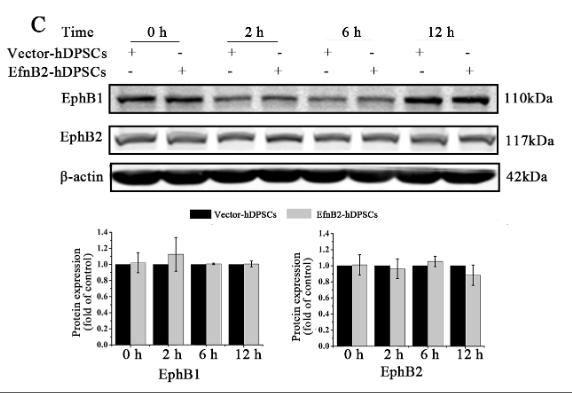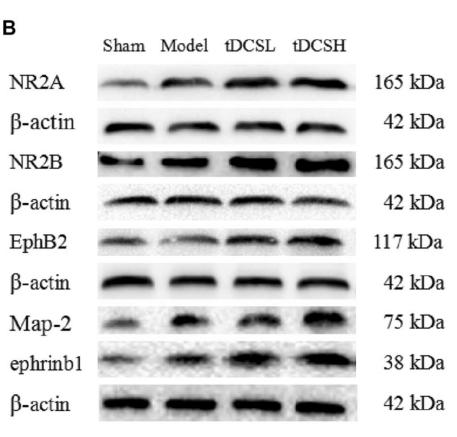产品描述
*The optimal dilutions should be determined by the end user. For optimal experimental results, antibody reuse is not recommended.
*Tips:
WB: 适用于变性蛋白样本的免疫印迹检测. IHC: 适用于组织样本的石蜡(IHC-p)或冰冻(IHC-f)切片样本的免疫组化/荧光检测. IF/ICC: 适用于细胞样本的荧光检测. ELISA(peptide): 适用于抗原肽的ELISA检测.
引用格式: Affinity Biosciences Cat# AF5246, RRID:AB_2837732.
展开/折叠
cek5; Developmentally regulated EPH related tyrosine kinase; DRT; EK5; ELK related protein tyrosine kinase; Eph receptor B2; EPH tyrosine kinase 3; EPH-like kinase 5; EPHB2; EPHB2_HUMAN; Ephrin type B receptor 2; Ephrin type-B receptor 2; EPHT 3; ERK; ETECK; hEK5; Nuk; Prkm 5; Receptor protein tyrosine kinase HEK 5; Renal carcinoma antigen NY-REN-47; Sek 3; Tyro 5; Tyrosine protein kinase receptor CEK 5; Tyrosine protein kinase receptor EPH 3; Tyrosine protein kinase receptor QEK 5; Tyrosine-protein kinase receptor EPH-3; Tyrosine-protein kinase TYRO5;
抗原和靶标
A synthesized peptide derived from human EPHB2, corresponding to a region within C-terminal amino acids.
Brain, heart, lung, kidney, placenta, pancreas, liver and skeletal muscle. Preferentially expressed in fetal brain.
- P29323 EPHB2_HUMAN:
- Protein BLAST With
- NCBI/
- ExPASy/
- Uniprot
MALRRLGAALLLLPLLAAVEETLMDSTTATAELGWMVHPPSGWEEVSGYDENMNTIRTYQVCNVFESSQNNWLRTKFIRRRGAHRIHVEMKFSVRDCSSIPSVPGSCKETFNLYYYEADFDSATKTFPNWMENPWVKVDTIAADESFSQVDLGGRVMKINTEVRSFGPVSRSGFYLAFQDYGGCMSLIAVRVFYRKCPRIIQNGAIFQETLSGAESTSLVAARGSCIANAEEVDVPIKLYCNGDGEWLVPIGRCMCKAGFEAVENGTVCRGCPSGTFKANQGDEACTHCPINSRTTSEGATNCVCRNGYYRADLDPLDMPCTTIPSAPQAVISSVNETSLMLEWTPPRDSGGREDLVYNIICKSCGSGRGACTRCGDNVQYAPRQLGLTEPRIYISDLLAHTQYTFEIQAVNGVTDQSPFSPQFASVNITTNQAAPSAVSIMHQVSRTVDSITLSWSQPDQPNGVILDYELQYYEKELSEYNATAIKSPTNTVTVQGLKAGAIYVFQVRARTVAGYGRYSGKMYFQTMTEAEYQTSIQEKLPLIIGSSAAGLVFLIAVVVIAIVCNRRGFERADSEYTDKLQHYTSGHMTPGMKIYIDPFTYEDPNEAVREFAKEIDISCVKIEQVIGAGEFGEVCSGHLKLPGKREIFVAIKTLKSGYTEKQRRDFLSEASIMGQFDHPNVIHLEGVVTKSTPVMIITEFMENGSLDSFLRQNDGQFTVIQLVGMLRGIAAGMKYLADMNYVHRDLAARNILVNSNLVCKVSDFGLSRFLEDDTSDPTYTSALGGKIPIRWTAPEAIQYRKFTSASDVWSYGIVMWEVMSYGERPYWDMTNQDVINAIEQDYRLPPPMDCPSALHQLMLDCWQKDRNHRPKFGQIVNTLDKMIRNPNSLKAMAPLSSGINLPLLDRTIPDYTSFNTVDEWLEAIKMGQYKESFANAGFTSFDVVSQMMMEDILRVGVTLAGHQKKILNSIQVMRAQMNQIQSVEGQPLARRPRATGRTKRCQPRDVTKKTCNSNDGKKKGMGKKKTDPGRGREIQGIFFKEDSHKESNDCSCGG
研究背景
Receptor tyrosine kinase which binds promiscuously transmembrane ephrin-B family ligands residing on adjacent cells, leading to contact-dependent bidirectional signaling into neighboring cells. The signaling pathway downstream of the receptor is referred to as forward signaling while the signaling pathway downstream of the ephrin ligand is referred to as reverse signaling. Functions in axon guidance during development. Involved in the guidance of commissural axons, that form a major interhemispheric connection between the 2 temporal lobes of the cerebral cortex. Also involved in guidance of contralateral inner ear efferent growth cones at the midline and of retinal ganglion cell axons to the optic disk. In addition to axon guidance, also regulates dendritic spines development and maturation and stimulates the formation of excitatory synapses. Upon activation by EFNB1, abolishes the ARHGEF15-mediated negative regulation on excitatory synapse formation. Controls other aspects of development including angiogenesis, palate development and in inner ear development through regulation of endolymph production. Forward and reverse signaling through the EFNB2/EPHB2 complex regulate movement and adhesion of cells that tubularize the urethra and septate the cloaca. May function as a tumor suppressor. May be involved in the regulation of platelet activation and blood coagulation.
Autophosphorylated; ligand binding stimulates autophosphorylation on tyrosine residues.
Polyubiquitinated; ligand binding stimulates ubiquitination.
Ligand binding induces cleavage by matrix metalloproteinases (MMPs) such as MMP7/MMP9, producing an EphB2/N-terminal fragment (NTF) and a C-terminal long fragment (EphB2-LF). EphB2-LF is further cleaved by MMPs, producing EphB2/CTF1 which is further cleaved by the PS1/gamma-secretase producing EphB2/CTF2.
Cell membrane>Single-pass type I membrane protein. Cell projection>Axon. Cell projection>Dendrite.
Brain, heart, lung, kidney, placenta, pancreas, liver and skeletal muscle. Preferentially expressed in fetal brain.
Belongs to the protein kinase superfamily. Tyr protein kinase family. Ephrin receptor subfamily.
研究领域
· Organismal Systems > Development > Axon guidance. (View pathway)
文献引用
Application: WB Species: Human Sample: hDPSCs
Application: WB Species: human Sample: hDPSCs
Application: WB Species: Mice Sample: hippocampal
Application: WB Species: human Sample:
限制条款
产品的规格、报价、验证数据请以官网为准,官网链接:www.affbiotech.com | www.affbiotech.cn(简体中文)| www.affbiotech.jp(日本語)产品的数据信息为Affinity所有,未经授权不得收集Affinity官网数据或资料用于商业用途,对抄袭产品数据的行为我们将保留诉诸法律的权利。
产品相关数据会因产品批次、产品检测情况随时调整,如您已订购该产品,请以订购时随货说明书为准,否则请以官网内容为准,官网内容有改动时恕不另行通知。
Affinity保证所销售产品均经过严格质量检测。如您购买的商品在规定时间内出现问题需要售后时,请您在Affinity官方渠道提交售后申请。产品仅供科学研究使用。不用于诊断和治疗。
产品未经授权不得转售。
Affinity Biosciences将不会对在使用我们的产品时可能发生的专利侵权或其他侵权行为负责。Affinity Biosciences, Affinity Biosciences标志和所有其他商标所有权归Affinity Biosciences LTD.







